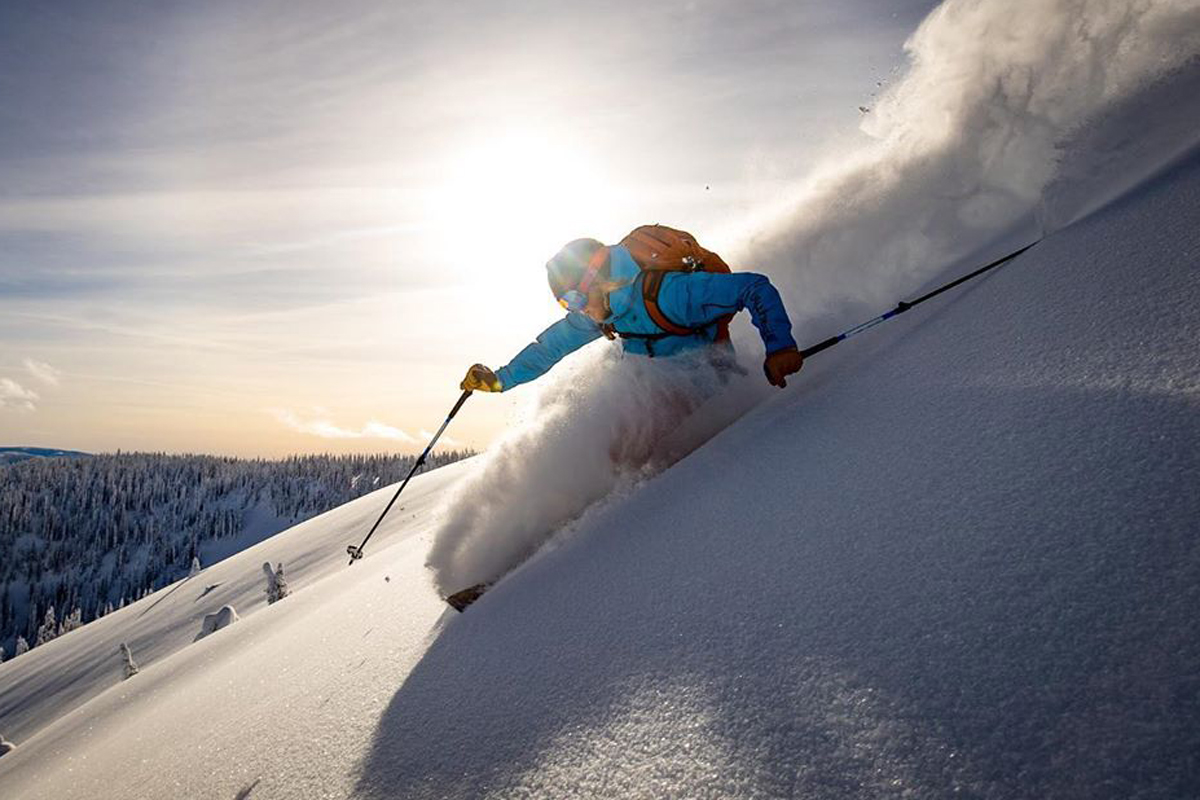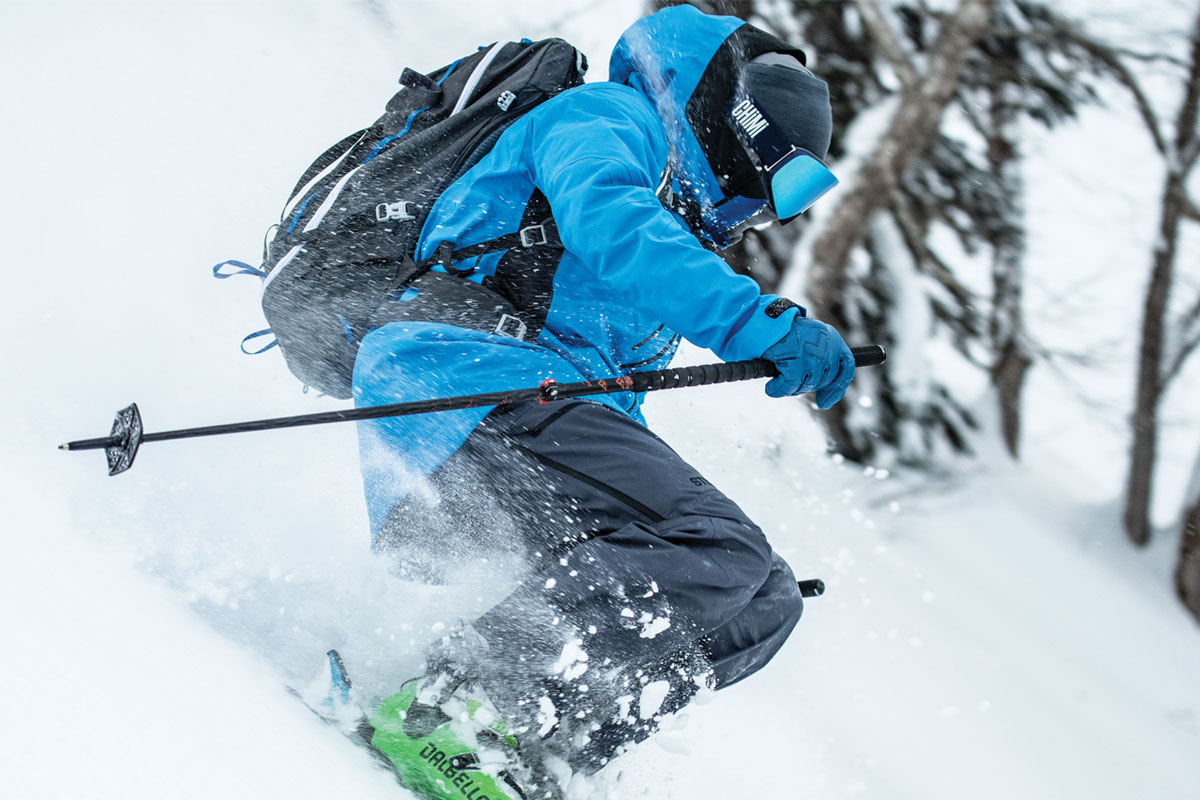
A ski jacket is an absolute necessity if you’re planning to throw yourself down some alpine mountains this winter. They offer complete protection when you’re carving down the mountains, keep you warm and prevent snow from leaking in, causing you to become wet and weighed down.
With snowsports becoming ever more popular, there’s no shortage of brands producing some great quality ski jackets, and ones that look good too. You could always opt for an all-black number, but where’s the fun in that?
We’re not saying you need to bring back the 80s trend of retro-looking jumpsuits (but if you want to, have at it), but injecting a bit of colour on the snow and mountains not only gives you a unique look but will make it easier for your fellow group members to spot you.
Ski Jacket vs Snowboard Jacket
The main difference between a ski jacket and a snowboard jacket is their fit. Ski jackets tend to offer a more snug fit, at least compared to snowboard jackets, which tend to be a lot looser. Snowboard jackets are also longer at the back to protect your behind from getting cold and wet when you fall off the board.
However, since both are designed to protect against wind, rain, snow and whatever else the mountain can throw at you, you’re safe to wear a snowboard jacket for skiing, or vice versa. More importantly, ski jackets (like all technical outerwear) can feature a range of various fabric technologies, all with a similar aim of keeping you warm and dry.
Here are a few key technologies to look out for.
Ski Jacket Styles
Ski jackets can come in various styles. The main three you’re going to see when searching are shell, insulated or 3-in-1. Each offers something different so determining which ski jacket style is best for you will come down to personal preference – if you already have a good mid-layer, you may just want to invest in a shell, for example – and cost.
Shell jackets

Shell jackets literally provide a shell outer layer. They usually come without any real insulation, instead, offering a solid outer layer to protect you from wind, rain and snow. You will, however, need to source base and mid-layers to provide extra warmth. Within shell jackets, you can get hard and softshell, which have varying levels of breathability.
The former is better for backcountry skiing while the latter soft-shell is more appropriate for resort skiing. If a shell jacket is the style you choose, be sure to dig a little deeper into what’s around.
Insulated jackets

Insulated jackets are the style we suspect most skiers and snowboarders will choose. They offer the best of both worlds: a tough outer layer that protects from the elements, with a warm inner layer that’s breathable and comfortable. The insulation material can range from jacket to jacket, with some manufacturers continuing to use down, while others have chosen to go down more sustainable routes by developing their own synthetic fabrics.
3-in-1 jackets

3-in-1 jackets provide a solid outer layer, with a removable warm inner layer. This gives you versatility, meaning you can wear the full package on particularly cold days, just the shell on days that just require some protection from a bit of rain or just the inner layer to accompany you on chilly but dry winter evenings.
Fabric Technologies
Gore-Tex is the brand of weatherproof fabric technologies that signifies something you can trust to provide the best protection. However, within the Gore-Tex range are multiple different variations.
Gore-Tex Pro is the creme de la creme, the fabric that even comes with a “guaranteed to keep you dry” promise, no matter how harsh the downpour you find yourself in. It also provides superior breathability to keep you sweat-free, yet warm at the same time.
Gore-Tex Paclite jackets are, as their name implies, packable. This means they’re more shell-like jackets that offer a protective layer, requiring you to layer up underneath, as opposed to do-it-all jackets that will protect you from everything. Gore-Tex Paclite jackets are still breathable, windproof and waterproof, they’re just perhaps less rugged.
Men’s Ski Jackets FAQ
Should my ski jacket be tight or loose?
The correct answer will be, just right. Your ski jacket must fit you well and not too tight that all the layers underneath make you feel bulky and stuffy. It should be snug while allowing you full range of movement.
What do you wear under a ski jacket?
You may wear a sweater, a fleece jacket or a turtleneck under your ski jacket. Pair them with insulating pants under your snow pants, plus winter gloves and you will be warm enough in the slopes.
How much should I spend on a ski jacket?
Prices for ski jackets can be as low as $100 and as high as $1,000 or more. If you want to get good discounts, buy one during an end-of-season sale.
Some more helpful DMARGE stories about snowsports:
The post 12 Stylish Ski Jackets For Men In 2022 appeared first on DMARGE.


0 Commentaires